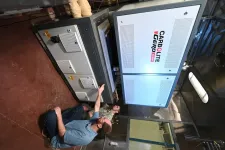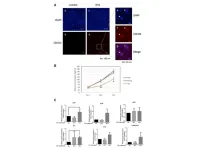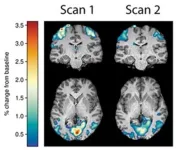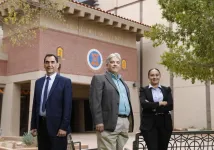(Press-News.org) Announcements in June 2022 of possible realignments of major east-west athletic conferences raised concern among many sleep and circadian physicians and scientists across the United States. As a result of such changes, student-athletes would suffer the negative consequences of increased travel—especially with travel that that crosses time zones and induces jet lag.
Because of the concern over the demise of the Pac12, leading to more east-west trips, a group of sleep and circadian scientists and physicians have published a white paper describing the significance of repeated, chronic jet lag on student-athlete health and performance—both in academics and in sports. They also suggest strategies that can be used to reduce the consequences of travel across time zones.
Travel is essential in collegiate athletic programs, and it inevitably results in disruptions of academic work, poor sleep, and alterations in most other aspects of student life. But all travel is not the same, explains Stanford Professor Craig Heller.
“Our bodies consist of a myriad of biological processes that are coordinated by a central clock in the brain,” Dr. Heller explained. “That clock has its own daily rhythm that is correlated with home time, but that internal rhythm is not exactly 24 hours. The brain clock and the processes it times are therefore called circadian (circa=about, dia=day).”
Dr. Heller explains that when people cross time zones, the brain’s circadian clock stays on “home” time until it can be resynchronized to local time. During this resynchronization process, different body systems can lose their coordination with each other and with local time. “Therefore, crossing time zones disrupts the alignment of body functions and their ability to function optimally,” he said.
Jet lag causes poor, short, fragmented sleep, altered digestive functions, weakened emotional control, and compromised physical and cognitive performance. For each time zone crossed, the realignment of body functions with local time takes about a day. If the stay in the new location is long enough to enable complete realignment with local time, there will be a repeat of jet lag after the return home. Importantly, repeatedly crossing time zones every week or two results in chronic jet lag, which can have significant impacts on the lives of the student-athletes.
In addition to the imposition of jet lag on the student-athletes, competitions between teams from different time zones raise scheduling issues. Different aspects of performance are optimal at different times of day, and therefore at different circadian times.
Professor Horacio de la Iglesia from University of Washington, a co-author of the paper and President of the Society for Research on Biological Rhythms, explains “Cognitive abilities are best in the morning hours, complex hand-eye coordination in early afternoon, and peak muscle performance in late afternoon-early evening. Therefore, the scheduling of events can favor one or the other team.”
An obvious example is that an east coast team traveling to the west coast for an evening game time would be competing when their circadian rhythms are set for sleep. Similarly, a west coast team traveling to the east coast would be sleep deprived due to short/disrupted sleep during travel. More important than winning or losing, injuries are more likely when not competing at the optimal circadian time.
Athletic conference agreements involve more than the financial considerations of resulting media contracts. There are significant costs to the student-athletes. If increased east-west travel is inevitable, then there should be major efforts to mitigate jet lag consequences and create event schedules that minimize the circadian differentials between the teams. The authors recommend methods to lessen the impact of jet lag. These methods include preadaptation for several days before travel. Alternatively, allowing sufficient time in the new location to allow circadian adjustment is beneficial, but difficult because it extends trip duration. Both before and after travel, management of exposure to light is important as are a variety of methods to facilitate good sleep. Athletic department consultations with local sleep and circadian experts are advisable. Longitudinal collection of data on travel along with physical and mental health, and academic and athletic performance of student athletes will be of value in assessing and minimizing the impact of conference realignments on our student-athletes.
“This white paper was endorsed by the Society for Research on Biological Rhythms as well as the Sleep Research Society,” emphasizes Smith College Professor Mary Harrington, Editor in Chief of the Journal of Biological Rhythms. “The 25 authors of this paper represent key expertise across the fields of circadian and sleep medicine.”
This article, “The Negative Effects of Travel on Student Athletes Through Sleep and Circadian Disruption”, by H. Craig Heller and others and published in Journal of Biological Rhythms will be free to access and can be read here: https://journals.sagepub.com/doi/epub/10.1177/07487304231207330
END
Physicians, scientists agree increased East-West travel has negative impacts on student-athletes through sleep and circadian disruption
2023-12-01
ELSE PRESS RELEASES FROM THIS DATE:
Arizona State, Idaho National Laboratory team to boost clean energy research
2023-12-01
Idaho National Laboratory (INL) and Arizona State University (ASU) have agreed to expand their joint efforts in clean energy research for the next five years. An agreement signed in October establishes a framework for both institutions to develop low-carbon processes for the energy and manufacturing sectors.
One joint project works to improve and decarbonize methods to extract critical minerals needed for renewable energy generation, energy storage and high-tech electronics. Another effort will develop solutions to electrify process heating, a major pathway to decarbonizing heavy manufacturing.
Researchers from INL and ASU have previously ...
New bottlenose dolphin sense discovered: they feel electricity
2023-12-01
Born tail first, bottlenose dolphin calves emerge equipped with two slender rows of whiskers along their beak-like snouts – much like the touch-sensitive whiskers of seals. But the whiskers fall out soon after birth, leaving the youngster with a series of dimples, known as vibrissal pits. Recently Tim Hüttner and Guido Dehnhardt, from University of Rostock, Germany, began to suspect that the dimples may be more than just a relic. Could they allow adult bottlenose dolphins to sense weak electric fields? Taking an initial close look, they realised that the remnant pits resemble ...
Genomic study sheds light on how carnivorous Asian pitcher plants acquired signature insect trap
2023-11-30
BUFFALO, N.Y. — Possessing more than two complete sets of chromosomes can be a hindrance to long-term survival of a plant lineage, yet scientists are also finding evidence it’s likely behind some evolutionary innovation.
Sudden inheritance of whole suites of extra gene copies can add redundancy to an organism's regular sets of functions, actually permitting some of those copies to evolve and express in entirely new ways.
In the case of the East Asian pitcher plant, this mutational freedom may have even fine-turned its ability to capture prey and satisfy its appetite for “meat.”
That’s just one of the findings ...
Harnessing the power of a parasite that can stop pain
2023-11-30
COLUMBUS, Ohio – For the first time, scientists have begun to figure out why the disfiguring skin lesions caused by cutaneous leishmaniasis don’t hurt.
Researchers analyzed leishmaniasis lesions on mouse skin to detect metabolic signaling pathways that differed from uninfected mice. Results suggested the parasites that cause the disease change pain perception – presumably as a way to delay treatment and promote their own survival.
“No one knows why these lesions are painless – ...
Aging modulates extracellular vesicles of epidermal keratinocytes
2023-11-30
“In this article, we describe for the first time the impact of chronological aging on EVs production by human keratinocytes.”
BUFFALO, NY- November 30, 2023 – A new research paper was published on the cover of Aging (listed by MEDLINE/PubMed as "Aging (Albany NY)" and "Aging-US" by Web of Science) Volume 15, Issue 22, entitled, “Chronological aging impacts abundance, function and microRNA content of extracellular vesicles produced by human epidermal keratinocytes.”
The disturbance of intercellular communication is one of the hallmarks of aging. In their new study, researchers ...
Center for BrainHealth publishes new model to predict improvement in brain health
2023-11-30
As part of its ongoing quest to advance better brain health and performance, new research led by Center for BrainHealth at The University of Texas at Dallas investigated neural biomarkers associated with improvements on a brain health index.
The study, “Toward Precision Brain Health: Accurate Prediction of a Cognitive Index Trajectory Using Neuroimaging Metrics,” was recently published in Cerebral Cortex
A total of 48 participants aged 21–65 completed a simple task during a functional magnetic resonance imaging (fMRI) session, then once ...
Scientists find gene therapy reduces liver cancer in animal model
2023-11-30
Researchers at UC Davis Comprehensive Cancer Center have shown that inhibiting a specific protein using gene therapy can shrink hepatocellular carcinoma (HCC) in mice. Silencing the galectin 1 (Gal1) protein, which is often over-expressed in HCC, also improved the anti-cancer immune response and increased the number of killer T cells inside tumors. The study was published in Acta Pharmaceutica Sinica B.
“We’ve long known that Gal1 is a biomarker for hepatocellular carcinoma,” said ...
Air Force awards UTEP Grant to safeguard assets in space
2023-11-30
EL PASO, Texas (Nov. 30, 2023) – Space near earth is teeming with objects, whether natural, like meteors and comets, or manmade, like satellites, spacecraft and rocket debris. But experts still need a clearer picture of the location and state of these objects, which can threaten space-based assets, such as GPS, weather-monitoring and communication satellites.
“The United States is dependent economically and militarily on space assets,” said Miguel Velez-Reyes, Ph.D., chair of the Electrical and Computer Engineering Department at The University of Texas at El Paso. “For ...
Stigmatizing content on social media affects perceptions of mental health care, new study reveals
2023-11-30
Research has shown that social media can negatively impact people's mental health. But can it affect people’s beliefs about mental health treatment?
Yes, according to researchers at Union. In one of the first studies to examine the impact of social media on people’s perceptions of mental health care, researchers discovered that viewing just a few social media posts that mock mental health treatment can have a profound impact on some people's attitudes toward treatment.
The study appears in the latest issue of the journal Social Media + Society.
For the study, 186 participants viewed 10 tweets. The gender ...
New study offers cautious hope about the resilience of redwoods
2023-11-30
New research from Northern Arizona University has explained coast redwood’s remarkable ability to recover from very severe fire, a rare sign of optimism amid a landscape increasingly scarred by severe fires.
The study, published today in Nature: Plants, examined recovery after the catastrophic CZU Lightning Complex Fire, which began in August 2020 and burned thousands of acres of redwoods in Big Basin State Park in California, some more than 1,500 years old. Researchers from NAU’s Center for Ecosystem Science and Society (Ecoss) and the School of Informatics, Computing, and Cyber Systems (SICCS) found, however, that many trees were not dead, as they first appeared. Redwoods ...



